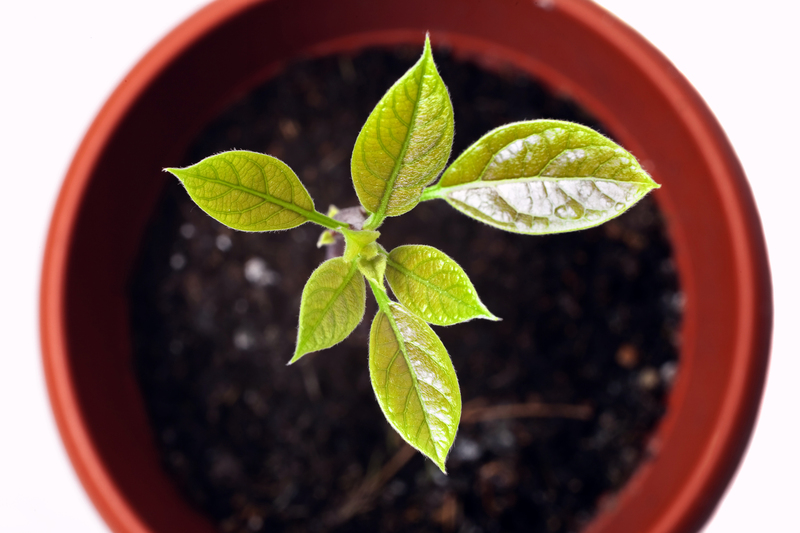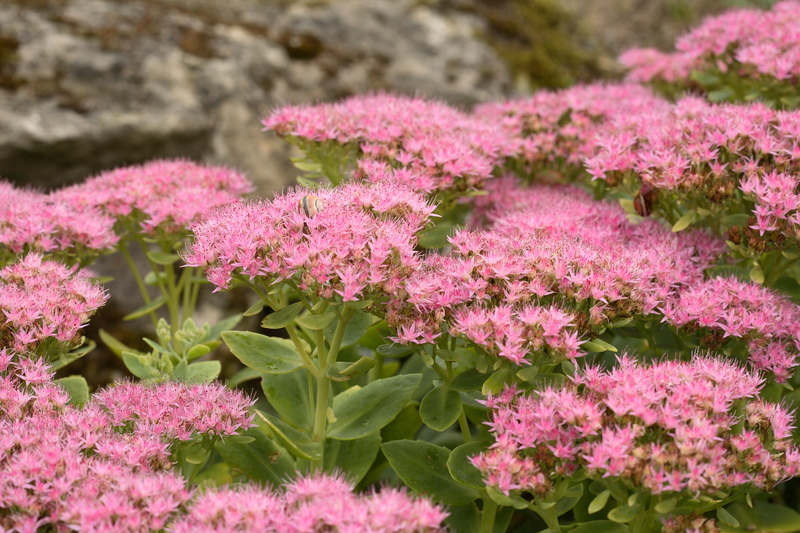Ensuring Longevity in Your Orchids
Posted on 23/09/2025
Ensuring Longevity in Your Orchids: The Ultimate Guide
The art of orchid care is an enriching pursuit for plant lovers around the globe. These exquisite blooms are known not only for their unique beauty but also for their longevity--if properly nurtured. This comprehensive guide will provide you with everything you need to know about ensuring longevity in your orchids, from orchid care basics to advanced techniques, troubleshooting tips, and practical routines. Whether you're a novice or an experienced gardener, dive in and let your orchids thrive for years to come.

Understanding Orchids: Foundation for Longevity
Before diving into maintenance, it's crucial to understand what makes orchids unique and what they require to live long and healthy lives.
Orchid Diversity
- Over 25,000 species: Orchids are one of the largest plant families on earth, found on every continent except Antarctica.
- Epiphytic and terrestrial orchids: Most domestic orchids are epiphytic, meaning they grow on trees, while some, like Cymbidiums, are terrestrial.
Understanding your orchid's origin helps you mimic its natural environment, which is the first key to prolonged health and orchid longevity.
Orchid Longevity: What to Expect?
With proper care, many popular orchids such as Phalaenopsis, Dendrobium, and Cattleya can live for decades. There have even been documented cases of orchids living over 100 years!
The longevity of orchids depends on consistent attention to their needs, adaptation to their natural habitat, and proactive management of health and environment.
The Essential Aspects of Ensuring Orchid Longevity
Orchid longevity relies on a symphony of factors. Below, we break down each aspect and offer actionable advice for maintaining long-lived orchids.
1. Lighting: The Foundation of Orchid Health
Light impacts everything from growth and blooming to disease resistance. Orchids generally thrive in bright, indirect light. Too much sunlight can scorch leaves, while too little slows growth and blooming.
- South or east-facing windows: Ideal for most orchid varieties.
- Filtered sunlight: Use sheer curtains to diffuse intense rays.
- Artificial lighting: Full-spectrum fluorescent or LED grow lights work in lower natural light environments.
Tip: If your orchid's leaves are dark green, it may need more light. Yellowish or reddish tones indicate too much light.
2. Watering: Avoiding the Number One Killer
Overwatering is a leading cause of orchid failure and reduced lifespan. Most orchids prefer their roots to slightly dry between waterings.
- Use tepid, distilled, or rainwater.
- Water thoroughly, then allow excess to drain completely.
- Frequency: Once a week for most homes, less in winter.
- Avoid letting roots sit in water--this encourages root rot.
Tip: Err on the side of underwatering rather than overwatering to support orchid longevity.
3. Humidity and Air Circulation: Mimic Nature's Balance
Orchids evolved in humid, breezy environments. To promote orchid health and lifespan:
- Maintain humidity: Ideal range is 40-70%.
- Use humidity trays or group plants together.
- Ensure adequate air circulation with fans to prevent fungal issues.
Tip: Mist your orchids early in the day, never late in the evening.
4. Feeding: Nutrition for Lasting Beauty
Orchids need regular, weak fertilization for long-term vitality.
- Use a balanced orchid fertilizer (20-20-20 or orchid-specific blends).
- Feed "weekly, weakly": Dilute fertilizer to 1/4th strength, applying weekly.
- Flush pots with plain water monthly to prevent salt buildup.
Note: Overfertilizing is as harmful as neglect.
5. Repotting: A Fresh Start
Repotting is essential for prolonging your orchid's lifespan. Old potting media decomposes, impeding air and holding excess moisture.
- Repot every 1-2 years or when media breaks down.
- Use special orchid bark or sphagnum moss--never regular soil.
- Repot after flowering to minimize stress.
Tip: Remove damaged or dead roots during repotting to support healthy growth.
Advanced Orchid Longevity Techniques
If you've mastered the basics, elevate your care with these advanced strategies for maximum orchid longevity.
Rescue and Revival: Saving Stressed Orchids
- Isolate sick plants: Prevents disease spread.
- Trim dead roots/leaves: Sterilize scissors to avoid infection.
- Review water/humidity: Adjust based on symptoms.
- Monitor for pests: Use insecticidal soap as needed.
Environmental Adaptation
Changing seasons challenge your orchid's resilience. For ongoing orchid vitality:
- Reduce watering in winter: Growth slows.
- Relocate to more light: If daylight shortens, use artificial lighting.
- Monitor temperature fluctuations: Most orchids prefer 18?C-28?C (65?F-82?F) by day, slightly cooler by night.
Encouraging Reblooming: Extending the Orchid Flower Life
Long-lived orchids should rebloom each year with proper care. To encourage reblooming:
- Rest period: After blooming, reduce water and allow your plant to rest.
- Cooler nights: Drop night temps by 10?F (5?C) for a few weeks.
- Fertilize post-bloom: Resume regular feeding once new growth appears.
Tip: Don't cut healthy green flower spikes on Phalaenopsis; they may rebloom.
Pest and Disease Management: Protecting Orchid Lifespan
Pests and diseases are major threats to the long-term health of your orchids. Early detection and action are crucial in ensuring orchid longevity.
Common Orchid Pests
- Aphids and Mealybugs: Sticky residue and deformities signal their presence.
- Spider mites: Fine webbing and silvery leaves.
- Scale: Tiny, brownish bumps on leaves or stems.
To combat pests:
- Inspect regularly under leaves and in pots.
- Wipe leaves with a damp cloth.
- Spray with insecticidal soap or neem oil for infestations.
Orchid Diseases
- Fungal and bacterial spots: Circular, wet, or sunken patches on leaves.
- Root rot: Soft, black, smelly roots due to excess moisture.
Prevention and rapid response are crucial. Remove affected tissues, use sterilized tools, and enhance airflow around plants.
Practical, Daily Orchid Longevity Routine
Consistency is the key to orchid longevity. Create a routine for maximum benefit:
- Morning check: Look for signs of distress, pests, or dryness.
- Weekly tasks: Water, fertilize, gently clean leaves.
- Monthly tasks: Inspect roots and pots, flush soil with clean water, and rotate plants for even light.
- Seasonal: Adjust watering, repot as needed, and clean pots thoroughly.
Documenting your routines and observations can help track your orchid's progress and identify issues quickly.
When an Orchid Declines: Knowing When and What to Do
Even with meticulous care, some orchids reach the end of their life cycle or succumb to disease. Recognizing irreversible decline ensures you focus efforts where they're most effective, perhaps propagating from healthy material.
Signs of Chronic Decline
- No new growth over several seasons.
- Continuous root loss with no regeneration.
- Persistent infections despite intervention.
Don't despair! Use healthy parts for propagation or compost as needed, then start anew with enhanced methods based on your experience.
Best Varieties for Long-Lasting Orchid Enjoyment
Some orchid species are well-known for their resilience and longevity. Consider these for a greater chance at orchid longevity success:
- Phalaenopsis (Moth Orchid): Easy care, reblooms reliably, and lives for decades.
- Cattleya: Famous for large, colorful flowers and long lifespan.
- Dendrobium: Durable, varied, and adaptable.
- Paphiopedilum (Lady Slipper): Terrestrial, long-lived, and perfect for home culture.

Frequently Asked Questions About Orchid Longevity
How long can an orchid live?
With proper care, many household orchids live for 20 to 25 years or more, with some documented as surpassing a century!
What is the most important factor in orchid longevity?
Consistent, attentive care matching the orchid's natural environment is the single most critical contributor to long-lasting orchids.
Can I revive a dying orchid?
Often, yes! With prompt isolation, trimming, water/humidity adjustment, and gentle care, you can often extend your orchid's life even after setbacks.
Conclusion: Enjoy Your Orchids for a Lifetime
Orchids are more than just beautiful plants -- they are remarkable long-living companions when treated with knowledge, consistency, and care. By following the guidance in this article, understanding your orchids, and responding to their unique needs, you will ensure longevity in your orchids and enjoy their remarkable blooms year after year.
Remember, the journey of orchid growing is not just about maintaining a plant, but about developing a rewarding relationship that can quite literally last a lifetime. Start implementing these tips today, and watch your orchids flourish for decades to come!
Your Next Steps
- Assess your current orchid care routines.
- Implement at least one new longevity tip this week.
- Join an orchid club or online community for ongoing support.
Your orchids will thank you with years--if not generations--of beautiful blooms and lush, vibrant growth!

